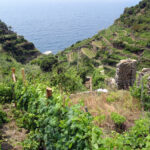[vc_row][vc_column][gem_quote]The Tuscan landscape is unmistakable: from the Apuan Alps to Capalbio, passing through the hills of Arezzo and the Pistoia mountains, there are orchards kissed by the sun. Among these, so ancient and luxuriant that they deserve to be visited, there are olive groves.[/gem_quote][/vc_column][/vc_row][vc_row][vc_column][vc_custom_heading text=”Production” use_theme_fonts=”yes”][/vc_column][/vc_row][vc_row css=”.vc_custom_1457788607747{margin-right: 0px !important;margin-bottom: 0px !important;margin-left: 0px !important;}”][vc_column width=”1/2″ css=”.vc_custom_1579461717834{padding-bottom: 404px !important;background-image: url(https://www.myitaliandriver.com/wp-content/uploads/2020/01/frantoio.jpg?id=25960) !important;background-position: center !important;background-repeat: no-repeat !important;background-size: cover !important;}”][/vc_column][vc_column width=”1/2″ css=”.vc_custom_1457788939445{padding-bottom: 20px !important;padding-left: 42px !important;}” offset=”vc_col-lg-offset-0″][vc_column_text]Next to each olive grove, there is usually an oil mill: an isolated place, which has now become so unusual as to retain a touch of charm. It is here that, in the months between autumn and winter, what is considered Tuscan gold is produced: extra virgin olive oil. Tuscany has become famous for its oil: farmers, aware of their treasure, have intensified the cultivation of the olive tree and its specimens, creating 119 varieties of extra virgin olive oil. Each of these stands out from the others for some peculiar traits, which make it unique and immediately recognizable. A very clear example is the oil produced on the hills of the Maremma: the Maremma olive groves, exposed to marine air currents, will make the final product slightly saltier than the others! The need to create monovarietal olive groves to produce more and more specific oils has come precisely from consumers, who are looking for an integral, clean and controlled origin dressing. This is why the grinding of Tuscan olives takes place with exclusively mechanical means; the only additive allowed is spring water.[/vc_column_text][/vc_column][/vc_row][vc_row][vc_column][tp_empty_space][/vc_column][/vc_row][vc_row][vc_column][vc_custom_heading text=”The tasting” use_theme_fonts=”yes”][/vc_column][/vc_row][vc_row css=”.vc_custom_1558979821019{margin-right: 0px !important;margin-bottom: 0px !important;margin-left: 0px !important;border-bottom-width: 0px !important;padding-bottom: 0px !important;}”][vc_column width=”1/2″ css=”.vc_custom_1457789015745{padding-top: 33px !important;padding-right: 42px !important;}”][vc_column_text]Visiting the Tuscan mills means, for an admirer, having the opportunity to taste excellent oils, from Quercetano to Maurino from Lucca, from Leccino to Moraiolo. The traditional method of tasting the oil is to sorb it from a teaspoon and let it flow to the sides of the mouth; recently, the spoon is replaced with a small blue glass, to keep the color of the liquid unchanged and warm it slightly in your hands before tasting. From the first sip, connoisseurs will be able to distinguish the intensity and structure of the Tuscan varieties, immediately sensing the gastronomic combination: who, recognizing the bitter and spicy notes of the Frantoio, would not think of a “Fiorentina” steak? And wouldn’t freshly squeezed Leccino go perfectly with a cream of chickpeas and prawns from the Tyrrhenian Sea?
However, we are still of the opinion that a product that is both simple and complex like oil can only enhance the salty and crunchy notes of another product, in turn simple and complex, of which excellent varieties are found in Tuscany: the bread.[/vc_column_text][/vc_column][vc_column width=”1/2″ css=”.vc_custom_1558979902543{padding-bottom: 80px !important;background-position: center !important;background-repeat: no-repeat !important;background-size: cover !important;}”][vc_single_image image=”25961″ img_size=”large”][/vc_column][/vc_row][vc_row css=”.vc_custom_1557157779865{margin-top: 0px !important;padding-top: 0px !important;}”][vc_column][vc_custom_heading text=”Here are some daily tours for you to discover Cinque Terre” font_container=”tag:h3|text_align:left” use_theme_fonts=”yes”][tp_product_list layout=”carousel” display_post=”4″ display_category=”cinqueterre”][/vc_column][/vc_row]



